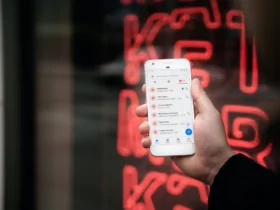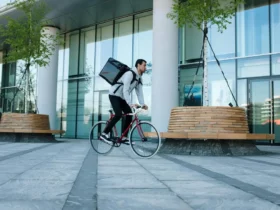As someone who’s always enjoyed the hustle and bustle of grocery stores, I was thrilled to sign up as an Instacart shopper. However, one question that constantly nagged at me was, does Instacart pay for gas? It’s a valid concern, considering the potential impact on my earnings.
To cut right to the chase, Instacart doesn’t pay for gas. As an Instacart shopper, you’re classified as an independent contractor. This means you’ll be using your own vehicle for deliveries, and footing the bill for maintenance and fuel.
However, don’t let this deter you. While Instacart may not cover your gas expenses, they do offer a per-delivery payment system, allowing you to earn between $13 and $20 per delivery. With smart planning and strategic delivery selection, you can still turn a profit, even after accounting for gas expenses.
Grasping Instacart’s Compensation System
Working with Instacart comes with a certain degree of financial predictability due to its structured and regularized payment system. This system is primarily batch-pay based and considers several factors like miles driven, time spent, tips, and performance-related bonuses.
Basic Earnings From Batch Orders
Instacart’s payment structure is mainly focused on the number of items you pick, the type of items (heavy water bottles or bulky bags of dog food for instance), and the distance you drive to deliver these groceries.
The payment for each order is counted from Monday of the previous week to Sunday of the same week.
However, when it comes to driving distance, Instacart doesn’t specify the exact amount they pay per mile in their standard rates.
What’s important to note is that while mileage and time are factored into earnings, Instacart doesn’t directly cover gas expenses. As an Instacart shopper, keep track of your mileage to ensure you’re not met with a hefty tax bill.
Additional Income: Tips and Performance Bonuses
The Instacart app provides an easy way to access detailed information about your earnings, including any additional income you might receive. This could be in the form of tips from customers, or performance-related bonuses.
Instacart tries to get away with the lowest upfront pay possible and only adds a boost after an order sits for a while. This means, as a shopper, you could potentially earn more for taking on orders that have been waiting longer.
Understanding this payment model is crucial for making an informed decision about whether working with Instacart could be a profitable part-time gig for you. Always keep in mind that careful planning and strategic selection of deliveries can help ensure a profit, even after accounting for gas costs.
Uncovering the Direct Costs for Instacart Shoppers
As I delve deeper into the world of Instacart shoppers, it’s crucial to understand the direct expenses involved in this role. These costs often come out of the shopper’s pocket, and it’s these expenses that can significantly influence your overall earnings. Let’s discuss two significant costs: vehicle upkeep and gas expenditures.
Upkeep and Deterioration of Your Vehicle
Every car owner knows that maintaining a vehicle isn’t cheap. The more you use your car, the more it’s going to cost you in the long run. For Instacart shoppers, this is a major consideration. Each shopping trip adds mileage to your car and takes a toll on its overall lifespan.
Regular oil changes, new tires, brake pad replacements, and other routine maintenance are all part of the deal when you’re putting significant miles on your vehicle. It’s important to remember that these costs are not reimbursed by Instacart. As a shopper, you’re solely responsible for these expenses.
Handling Your Fuel Costs
The most obvious cost associated with being an Instacart shopper is fuel. You’re driving from store to store, and then to the customer’s location. These miles add up, and so does the cost of gas. As of now, Instacart does not cover gas costs.
It’s up to the shopper to factor these costs into their overall earnings. While the payment model does account for mileage to some extent, the reality is that fuel prices fluctuate. Sometimes, they can rise unexpectedly, which can eat into your profits.
Being an Instacart shopper requires careful planning and strategy. It’s not just about picking up and delivering groceries. It’s about understanding your costs and how to best manage them. By being strategic about which orders you accept and how you plan your routes, you can help offset these expenses and maximize your earnings.
Is Mileage Factored into Instacart’s Payment System?
Even though Instacart doesn’t directly cover gas expenses, it does factor in mileage when calculating earnings. For every mile driven during a delivery, Instacart pays a certain amount. This mileage rate can vary depending on the region or city.
While the Instacart mileage pay doesn’t explicitly cover gas costs, it can offset them. So, the further you drive for a delivery, the more you earn, which helps account for the increased gas expenditure. However, it’s important to remember that optimizing your earnings isn’t just about driving long distances. Strategic selection of deliveries and careful route planning can also significantly impact your profit margins.
Instacart’s payment system seeks to balance fairness to shoppers while maintaining flexibility and convenience. It’s a delicate balancing act that considers both the effort put in by shoppers and the operational costs to the company.
So, while Instacart may not directly reimburse for gas, the overall structure of its payment system is designed to account for the various expenses shoppers might incur. This ensures shoppers can still make a profit, even after accounting for gas costs.
Remember, being a successful Instacart shopper takes more than just understanding the payment system. It also involves carefully planning your shopping and delivery routes, optimizing your grocery picking speed, and maintaining high-quality service to earn good ratings and tips.
With strategic planning and smart work, you can make the most of your Instacart shopping experience, even without direct gas reimbursement.
Gas Reimbursement: A Temporary Measure by Instacart
Here’s a twist. While it’s true that Instacart doesn’t usually cover gas expenses, there have been instances where they’ve introduced temporary measures to support their shoppers. Under certain circumstances, such as a significant rise in fuel prices, Instacart has been known to provide temporary gas reimbursements to help offset the increased costs.
This temporary reimbursement is calculated based on the current national average price of gas. The reimbursement rate is then applied to all the miles driven during the delivery. It’s important to note that this is not a permanent part of Instacart’s compensation structure and is only implemented during periods of high fuel prices.
To understand the specifics of this reimbursement, shoppers are advised to keep an eye on their emails and the shopper app. Instacart communicates these changes and updates through these channels.
So, while Instacart’s base payment model doesn’t directly account for gas costs, they’ve shown flexibility in their approach, stepping in to support shoppers when external factors significantly impact operating costs. This temporary measure, along with smart planning and efficient service, can help shoppers maintain their profit margins despite rising fuel prices.
As always, it’s essential for shoppers to stay informed and adapt their strategies according to the current conditions. This way, they can ensure they’re making the most out of their Instacart experience.
Gas Reimbursement Strategies Across Other Gig Economy Platforms
Let’s take a look at how other gig economy platforms deal with the issue of gas reimbursements. It’s an important factor that can significantly impact a gig worker’s earnings.
One popular platform, Uber, has a history of providing temporary fuel surcharges in response to rising gas prices. These surcharges are paid by riders and passed on to drivers. It’s an additional perk that helps offset fuel costs for drivers, though it isn’t a fixed feature in Uber’s payment structure.
Lyft, another well-known platform, follows a similar strategy. They’ve been known to implement temporary fuel surcharges during periods of high gas prices. Like Uber, these surcharges are borne by the riders and are given directly to the drivers.
Many delivery platforms, however, operate differently. DoorDash and Postmates for example, consider their drivers as independent contractors. These platforms typically don’t cover gas expenses, much like Instacart. They believe that the flexibility and freedom that comes with being an independent contractor compensate for these costs.
It’s clear that gas reimbursement policies vary widely across different gig economy platforms. Some offer temporary relief during periods of high gas prices, while others place the responsibility squarely on the shoulders of the gig workers. These policies can play a significant role in a gig worker’s decision to choose one platform over another.
By staying informed about these policies, gig workers can make strategic decisions that can help optimize their earnings.
Strategies for Instacart Shoppers to Minimize Gas Costs
Now that we’ve established that Instacart does not typically cover gas costs for its shoppers let’s explore some strategies that can help you save on gas expenses.
Plotting Efficient Routes
Efficient route planning is one of the best ways to conserve gas. By planning your shopping trips in advance, you can minimize the distance you need to travel, saving both time and gas. Use a GPS or mapping app to find the shortest, most efficient routes between the grocery store and your customer’s location. This is one of the main Instacart hacks that can help you boost your performance and earnings.
Leverage Fuel Rewards Programs
Many gas stations offer fuel rewards programs that can help you save money every time you fill up. Some grocery stores also have partnerships with gas stations for rewards programs. Remember to sign up and use these programs whenever you fill up your tank.
Cash Back Apps for Fuel Savings
There are numerous cash back apps available that offer rebates on gas purchases. Apps like GetUpside and Trunow can help you earn cash back on every gallon of gas you purchase. It’s an easy way to save a little extra on your gas expenses.
Utilize Gas Price Comparison Apps
Just like how prices for grocery items can vary from store to store, gas prices can also vary significantly between different gas stations. Using a gas price comparison app like GasBuddy or Waze can help you find the cheapest gas prices in your area.
Optimal Working Hours
Working during peak hours can lead to more orders and higher earnings. However, it can also mean more traffic and longer travel times, which can increase your gas costs. Try to balance your working hours to maximize your earnings while minimizing your gas costs.
Vehicle Maintenance for Better Fuel Efficiency
Regular vehicle maintenance can help improve your car’s fuel efficiency. This includes regular oil changes, keeping your tires properly inflated, and having your engine tuned up regularly. A well-maintained vehicle can significantly reduce your gas consumption.
By using these strategies, you can help offset the cost of gas and increase your overall earnings as an Instacart shopper. Keep in mind that while Instacart may not cover your gas costs, there are many other ways you can save on your expenses and make the most out of your gig.
Navigating Tax Write-offs for Self-Employed Individuals
As an Instacart shopper, you’re not just a grocery delivery person – you’re also a self-employed entrepreneur. This means you have the opportunity to leverage tax deductions that W-2 employees don’t. One of the most significant potential deductions for drivers like you? Vehicle expenses.
Keeping Track of Mileage for Tax Purposes
Record-keeping is crucial when it comes to maximizing your tax deductions. You should track mileage for tax purposes on Instacart. Every mile you drive while working – whether you’re on your way to the grocery store, heading to a customer’s house, or just returning home after completing an order – can be written off on your taxes.
There are a number of apps available that can help keep track of your mileage. These apps run in the background, automatically logging each mile you drive. At the end of the year, you’ll have an accurate record of your work-related travel, which can save you a lot of money when tax season rolls around.
Decoding the IRS Standard Mileage Rate
The IRS Standard Mileage Rate is a rate set by the Internal Revenue Service that taxpayers can use to calculate the deductible costs of operating a vehicle for business. In 2021, the rate is 56 cents per mile driven for business use.
This deduction can be highly valuable for Instacart shoppers. If you drive 10,000 miles in a year for work, you could potentially deduct $5,600 from your taxable income. This means that you’re effectively being “reimbursed” for your gas and other vehicle expenses through your tax savings.
However, it’s important to understand that you can’t double-dip. If you choose to use the standard mileage rate, you can’t also deduct specific vehicle-related expenses like gas, maintenance, or insurance. You’ll need to choose the method that provides the most financial benefit to you.
By staying informed and keeping diligent records, you can ensure that you’re taking full advantage of the tax benefits available to you as an Instacart shopper. Not only can this help offset the cost of gas, but it can also significantly boost your overall earnings.
Exploring Alternative Modes of Transportation
Recognizing that gas can be a major expense for Instacart shoppers, it’s worth considering alternate forms of transportation. By choosing eco-friendly options, you’ll not only save on gas, but also reduce your environmental impact.
Opting for a Fuel-Efficient Vehicle
One smart move is to use a fuel-efficient vehicle. By doing so, you can significantly lower your gas consumption and thus, your expenses. Fuel-efficient cars have been designed to maximize the energy extracted from fuel, minimizing waste. This means you’ll get more miles per gallon, and consequently, spend less on gas.
Trotting or Cycling for Smaller Orders
If you’re dealing with smaller orders and the delivery location is within a reasonable distance, why not walk or bike? It’s a cost-free mode of transportation that’s also beneficial for your health. The exercise you get from walking or biking can help counterbalance the sedentary periods of your job. Plus, you’ll be doing your part in reducing carbon emissions.
Utilizing Public Transportation When Feasible
Another cost-effective option could be using public transit. If your area has a reliable public transportation system, you could significantly cut down on your gas costs. Besides, it might even be faster during peak hours when the roads are jam-packed. Of course, this won’t be feasible for larger orders, but for smaller ones, it’s definitely an option worth considering.
Remember, as an Instacart shopper, you’re effectively running your own business. The wise business owner always looks for ways to cut costs and increase profits. By considering alternative modes of transportation, you could potentially save a significant amount on gas costs. And in the process, you’ll be helping the environment too.
Frequently Popped Questions
We’ll now delve into a few common questions that often come up in the minds of Instacart shoppers. These questions focus on aspects like mileage recording for tax purposes, payment per mile, earning calculations, and more.
Is it Possible to Log my Mileage and Gas Costs for Tax Deduction as an Instacart Shopper?
As an Instacart shopper, it’s a smart move to keep track of your mileage and gas expenses. The IRS allows self-employed individuals like you to deduct the costs of operating a vehicle for business. This is done using the IRS Standard Mileage Rate. Remember, you can’t claim specific vehicle-related expenses and the standard mileage rate simultaneously. It’s a one or the other kind of deal. Several apps are available to help you log your mileage accurately.
What is the Payment Rate for Every Mile Driven by an Instacart Shopper?
Instacart’s pay structure is multifaceted and isn’t solely based on miles driven. It also factors in the number of items in an order, the time it takes to shop, and the delivery distance. However, Instacart does provide a per-mile rate for the delivery distance. The exact rate can vary based on factors like location and demand.
How Does Instacart Calculate My Earnings?
Instacart calculates your earnings based on a combination of factors. These include a per-item fee, a per-order fee, and a per-mile rate for the delivery distance. Additionally, you get to keep 100% of the tips you earn. The Instacart app provides a breakdown of your earnings, offering transparency about how much you’re making from each order.
Has Instacart Introduced a Temporary Fuel Surcharge to Counteract Rising Fuel Prices?
In response to fluctuating fuel prices, many delivery services have implemented temporary fuel surcharges. At the moment, it’s best to check directly with Instacart or in the shopper app for the most current information regarding any potential fuel surcharges.
What Weekly Earnings Can I Anticipate from Instacart?
Your weekly earnings on Instacart can vary widely based on a number of factors. These include the number of hours you work, the number of orders you complete, and the tips you receive. It also depends largely on your area, as demand can fluctuate. It’s essential to keep in mind that as an Instacart shopper, you’re a self-employed individual. You can make up to $500 every week with Instacart, but only if you have a good work ethic. This means your earnings can fluctuate and are not guaranteed.
Wrapping Up – Is Instacart Still Profitable?
After delving into the nitty-gritty of Instacart’s pay structure and gas expenses, it’s clear that profitability isn’t a guarantee. It’s all about smart strategies. Keeping track of mileage for tax deductions and exploring alternative transportation methods can help save on gas costs. Remember, you can’t deduct specific vehicle-related expenses if you’re using the IRS Standard Mileage Rate, so it’s crucial to log your mileage accurately.
Your weekly earnings as an Instacart shopper will depend on various factors like the hours you work, the number of orders you complete, and the tips you receive. It’s a balancing act between maximizing orders and minimizing expenses. It may be a bit of a challenge, but with the right approach, you can make Instacart work for you. So, is Instacart still profitable? It can be, but it’s up to you to make it so. Keep these tips in mind, and you’ll be on your way to making the most out of your Instacart gig.













